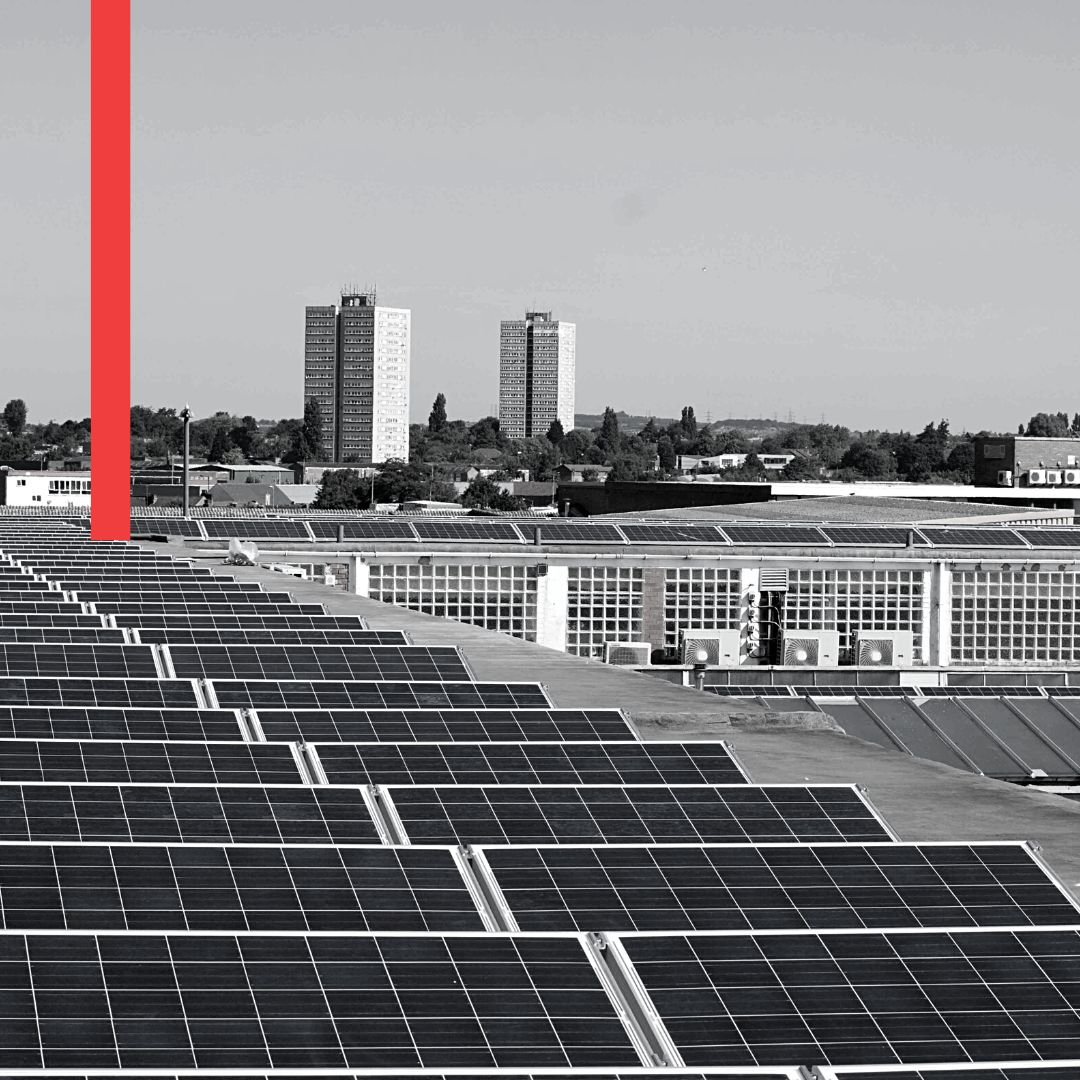Solar is a long-term investment
So, how do you ensure that putting solar on the roof of a commercial property does not limit future leasing options for the building? What if a new tenant wants to move in ten years from now, and has unique venting or HVAC requirements? Fortunately, flat roof solar racking technology makes a solar installation surprisingly adaptable.
Roof penetration should be minimal
Most solar installations on flat roofs are configured with little to no need for roof penetration. Flat roof solar racks use a ballasted system, where the racks are held in place with weighted blocks.
As part of the planning for a flat-roof solar installation, a structural engineer will confirm that the weighting system can be supported.
By eliminating roof penetration, the impact on the existing roof is minimized.

Solar racks can be relocated for new venting or HVAC units
The lack of direct attachment to the roof creates a degree of mobility that is critical if future needs arise for the roof space.
Let’s say that a restaurant moves into a space that was previously occupied by a retail tenant. The solar panel installation can be reconfigured to support the installation of new venting for the restaurant’s kitchen.
Similarly, if a new tenant has other roofing needs, such as a new HVAC unit, the roof space can be organized in a way that accommodates the solar panel installation in addition to tenant needs.

Existing roof warranties should not be impacted
The implementation of a solar program on a flat, commercial roof should not adversely impact the existing roof warranty. In fact, the property owner should expect the solar provider to demonstrate compliance with existing roof warranties as a part of the planning phase for a solar project.
Roof replacement and repairs
It is expected that a roof replacement may occur during the lifetime of a commercial solar program. The flexible nature of flat roof racking technology allows for roof replacements and repairs to be performed efficiently.
King Energy provides property owners with the option for solar panels to be temporarily relocated during a roof replacement, as it is an expected part of the life cycle of a commercial building.
Solar racks are invisible from below
It is typically not possible to tell if a shopping center or office building has solar in place when viewing the property from street level.
Flat roof solar racks are low profile, sitting close to roof level and having a slight angle to optimize interaction with the sun. Unless there is a desire for them to be seen, it should be possible to implement solar on a flat roof with no visual impact to the property.
Adaptability to support future need
A solar program can add substantial financial value to a commercial property. In doing so, it is important that the program does not limit future options for new tenants or new building configurations.
Fortunately, flat roof racking technology provides an approach that supports mobility and flexibility while also minimizing the physical and visual impact on the property.
